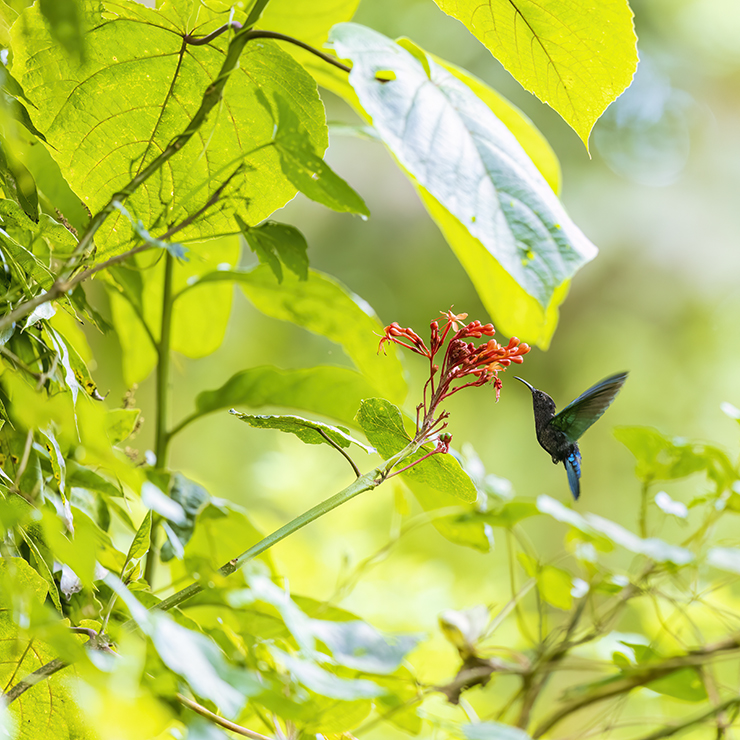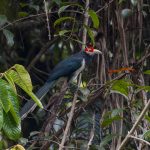
I remember being mortified at the depiction of a hummingbird on a Caribbean Airlines jet many years ago for the bird’s very obvious aqua-hued wings. To my limited knowledge, hummingbirds all had brown wings. Granted that the airline may not have been endeavouring to uphold a scientifically accurate rendition, it still irked me. Mentions of Trinidad being the “land of the hummingbird” served to further irk me later on, and the fact that the airline selected this logo to reference that makes me bring up a little bit of breakfast.
Years later, having dealt with seeing that logo for considerable time, Caribbean Airlines updated their visuals and now have a much more stylised version of a hummingbird to adorn the rear ends of their aircraft. I, meanwhile, have come to experience a species of hummingbird that has up-ended my perceptions of them being wholly brown-winged creatures.

Could this be a real bird? I had never seen a bird with iridescent wings before.
In the Lesser Antilles, a truly magnificent hummingbird is a gem of a sighting in primary forest (mostly) with undeniable charm. It is the largest hummingbird in the region, dwarfing the much commoner Antillean Crested Hummingbird. Aside from its wings being the most resplendent shade of turquoise-green dusted with gold, its throat is unbelievably pinkish-purple. The latter characteristic lends to its name; Purple-throated Carib.

Large-leaved forest trees and shrubs produce flowers which are irresistible to the Purple-throated Carib. Even its tail shimmered.

A Purple-throated Carib is easily distinguishable even from a distance in dingy rainforest light. Just look for the flashes of green and purple!

We came upon a clearing dotted with heliconias, this Purple-throated Carib was presumably staking its claim.
As with most hummingbirds, their gorget feathers are crystalline and their appearance can vary considerably depending on ambient conditions. One can only see the truest purple when the light is just right!

I caught a fleeting glimpse as this Purple-throated Carib posed.
Even though the birds were around for long after I took these pictures, the light in the forest changed a bit and no matter how hard I tried I could not render them as vividly.













Leave a Comment